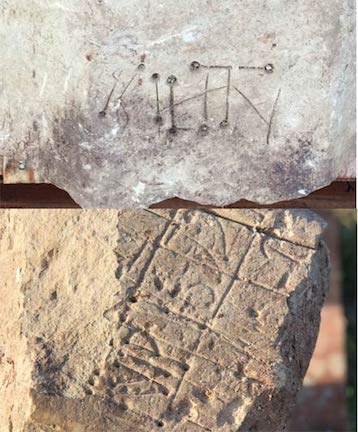12,500 year old rock art discovered in Amazonian rainforest
 'Sistine Chapel of the ancients' rock art discovered in remote Amazon forest
'Sistine Chapel of the ancients' rock art discovered in remote Amazon forest
Tens of thousands of ice age paintings across a cliff face shed light on people and animals from 12,500 years ago
Dalya Alberge, The Guardian (LINK)
Sun 29 Nov 2020 10.00 GMT
Photo: Marie-Claire Thomas/Wild Blue Media
One of the world’s largest collections of prehistoric rock art has been discovered in the Amazonian rainforest.
Hailed as “the Sistine Chapel of the ancients”, archaeologists have found tens of thousands of paintings of animals and humans created up to 12,500 years ago across cliff faces that stretch across nearly eight miles in Colombia.
Their date is based partly on their depictions of now-extinct ice age animals, such as the mastodon, a prehistoric relative of the elephant that hasn’t roamed South America for at least 12,000 years. There are also images of the palaeolama, an extinct camelid, as well as giant sloths and ice age horses.
These animals were all seen and painted by some of the very first humans ever to reach the Amazon. Their pictures give a glimpse into a lost, ancient civilisation. Such is the sheer scale of paintings that they will take generations to study.
The discovery was made last year, but has been kept secret until now as it was filmed for a major Channel 4 series to be screened in December: Jungle Mystery: Lost Kingdoms of the Amazon.
The site is in the Serranía de la Lindosa where, along with the Chiribiquete national park, other rock art had been found. The documentary’s presenter, Ella Al-Shamahi, an archaeologist and explorer, told the Observer: “The new site is so new, they haven’t even given it a name yet.”

 Thanks to: Josiah, Lydia at Mission Local
Thanks to: Josiah, Lydia at Mission Local Thanks to: Josiah, Laura W., Mission Local
Thanks to: Josiah, Laura W., Mission Local Thanks to: Brooklyn Street Art, r/stencils, Stencil Art FB group, r/streetart
Thanks to: Brooklyn Street Art, r/stencils, Stencil Art FB group, r/streetart